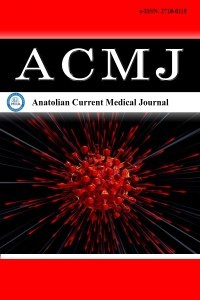1.
Rao JN, Wang JY. Regulation of gastrointestinal mucosalgrowth. San Rafael (CA): Morgan & Claypool Life Sciences;2010. Available from: https://www.ncbi.nlm.nih.gov/books/NBK54091/
2.
Krishnan B, Babu S, Walker J, Walker AB, Pappachan JM.Gastrointestinal complications of diabetes mellitus. World JDiabetes. 2013;4(3):51-63.
3.
Zhong HJ, Yuan Y, Xie WR, Chen MH, He XX. Type 2 diabetesmellitus is associated with more serious small intestinal mucosalinjuries. PLoS One. 2016;11(9):e0162354.
4.
Zhao M, Liao D, Zhao J. Diabetes-induced mechanophysiologicalchanges in the small intestine and colon. World J Diabetes.2017;8(6):249-269.
5.
Kalaichelvi S. Prevalence of symptomatic peptic ulcer in diabetesmellitus patients at outpatient department of GovernmentMedical College and Hospital in and around Villupuram District.Int Arch Integrated Med. 2018;5(2)111-115.
6.
Darra A, Singh V, Jena A, et al. Hyperglycemia is associated withduodenal dysbiosis and altered duodenal microenvironment.Scientific Rep. 2023;13(1):11038.
7.
Lerkdumnernkit N, Sricharoenvej S, Lanlua P, et al. The effects ofearly diabetes on duodenal alterations in the rats. Int J Morphol.2022;40(2)389-395.
8.
Maurer M, Taube C, Schröder NWJ, et al. Mast cells driveIgE-mediated disease but might be bystanders in many otherinflammatory and neoplastic conditions. J Allergy Clin Immunol.2019;144(4S):S19-S30.
9.
Hoh RA, Joshi SA, Lee JY, et al. Origins and clonal convergenceof gastrointestinal IgE+ B cells in human peanut allergy. SciImmunol. 2020;5(45):eaay4209.
10.
Sun P, Wen H, Liu X, Ma Y, Jang J, Yu C. Time trends in type 2diabetes mellitus incidence across the BRICS from 1990 to 2019:an age-period-cohort analysis. BMC Public Health. 2022;22(1):65.
11.
Lega IC, Lipscombe LL. Review: diabetes, obesity, and cancer-pathophysiology and clinical implications. Endocr Rev.2020;41(1):bnz014.
12.
Zaccardi F, Webb DR, Yates T, Davies MJ. Pathophysiologyof type 1 and type 2 diabetes mellitus: a 90-year perspective.Postgrad Med J. 2016;92(1084):63-69.
13.
Tan SY, Mei Wong JL, Sim YJ, et al. Type 1 and 2 diabetes mellitus:a review on current treatment approach and gene therapy aspotential intervention. Diabetes Metab Syndr. 2019;13(1):364-372.
14.
Brunkwall L, Orho-Melander M. The gut microbiome as atarget for prevention and treatment of hyperglycaemia in type2 diabetes: from current human evidence to future possibilities.Diabetologia. 2017;60(6):943-951.
15.
Frydrych LM, Bian G, O’Lone DE, Ward PA, Delano MJ.Obesity and type 2 diabetes mellitus drive immune dysfunction,infection development, and sepsis mortality. J Leukoc Biol.2018;104(3):525-534.
16.
McNelis JC, Olefsky JM. Macrophages, immunity, and metabolicdisease. Immunity. 2014;41(1):36-48.
17.
Divoux A, Moutel S, Poitou C, et al. Mast cells in human adiposetissue: link with morbid obesity, inflammatory status, anddiabetes. J Clin Endocrinol Metab. 2012;97(9):E1677-E1685.
18.
Liu J, Divoux A, Sun J, et al. Genetic deficiency andpharmacological stabilization of mast cells reduce diet-inducedobesity and diabetes in mice. Nat Med. 2009;15(8):940-945.
19.
Wang Z, Zhang H, Shen XH, et al. Immunoglobulin E andmast cell proteases are potential risk factors of impaired fastingglucose and impaired glucose tolerance in humans. Ann Med.2013;45(3):220-229.
20.
Divoux A, Moutel S, Poitou C, et al. Mast cells in human adiposetissue: link with morbid obesity, inflammatory status, anddiabetes. J Clin Endocrinol Metab. 2012;97(9):E1677-E1685.
21.
Liu J, Divoux A, Sun J, et al. Genetic deficiency andpharmacological stabilization of mast cells reduce diet-inducedobesity and diabetes in mice. Nat Med. 2009;15(8):940-945.
22.
Svensson J, Eising S, Mortensen HB, et al. High levels ofimmunoglobulin E and a continuous increase in immunoglobulinG and immunoglobulin M by age in children with newlydiagnosed type 1 diabetes. Hum Immunol. 2012;73(1):17-25.
23.
Maier LM, Howson JM, Walker N, et al. Association of IL13 withtotal IgE: evidence against an inverse association of atopy anddiabetes. J Allergy Clin Immunol. 2006;117(6):1306-1313.
24.
Caffarelli C, Romanini E, Caruana P, Street ME, de’ AngelisG. Clinical food hypersensitivity: the relevance of duodenalimmunoglobulin e-positive cells. Pediatr Res. 1998;44(4):485-490.
25.
Andre F, Andre C, Descos L, Colin L, Cavagna S. Diagnosis of foodallergy by counting IgE-positive duodenal cells. Revue FrançaiseD’allergologie et D’immunologie Clinique. 1993;33(2):119-123.
26.
Berczi L, Sebestyén A, Fekete B, Tamássy K, Kopper L. IgE-containing cells in gastric mucosa with and without Helicobacterpylori infection. Pathol Res Pract. 2000;196(12):831-834.
27.
Concepción Zavaleta MJ, Gonzáles Yovera JG, Moreno MarrerosDM, et al. Diabetic gastroenteropathy: an underdiagnosedcomplication. World J Diabetes. 2021;12(6):794-809.
28.
Zopf Y, Baenkler HW, Silbermann A, Hahn EG, Raithel M. Thedifferential diagnosis of food intolerance. Dtsch Arztebl Int.2009;106(21):359-370.
29.
Willis FB, Susan P, Patch A. Prediabetes reduction from foodallergen elimination. Med Clin Case Rep. 2023;3(1):1-3.
30.
Willis FB, Shanmugam R, Sullivan JH, Rodriguez JP, Mouton CP.Food allergen elimination for obesity reduction; a longitudinal,case-control trial (n= 94): 2295. Med Sci Sports Exercise.2022;54(9):671.
31.
Hessner MJ, Wang X, Meyer L, et al. Involvement of eotaxin,eosinophils, and pancreatic predisposition in developmentof type 1 diabetes mellitus in the BioBreeding rat. J Immunol.2004;173(11):6993-7002.

